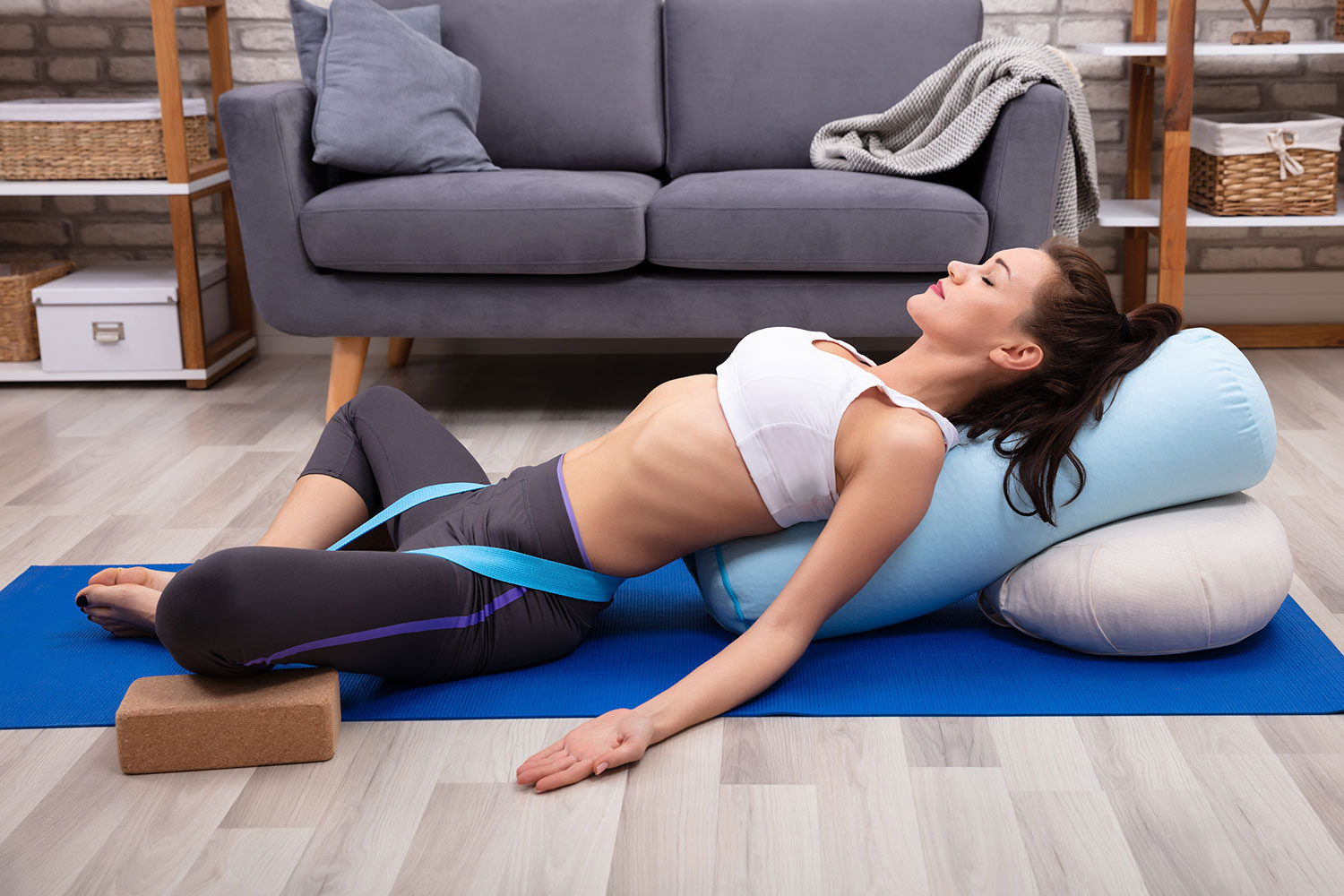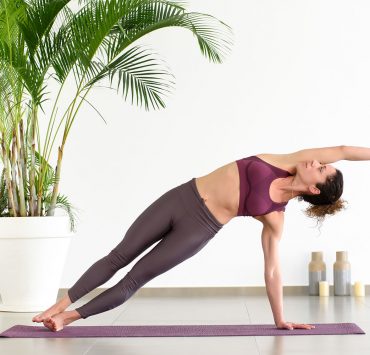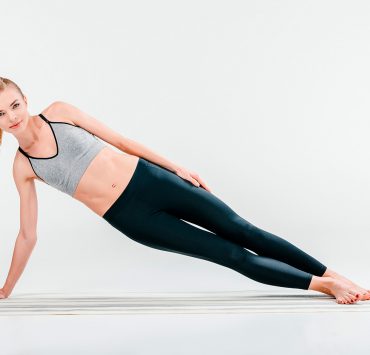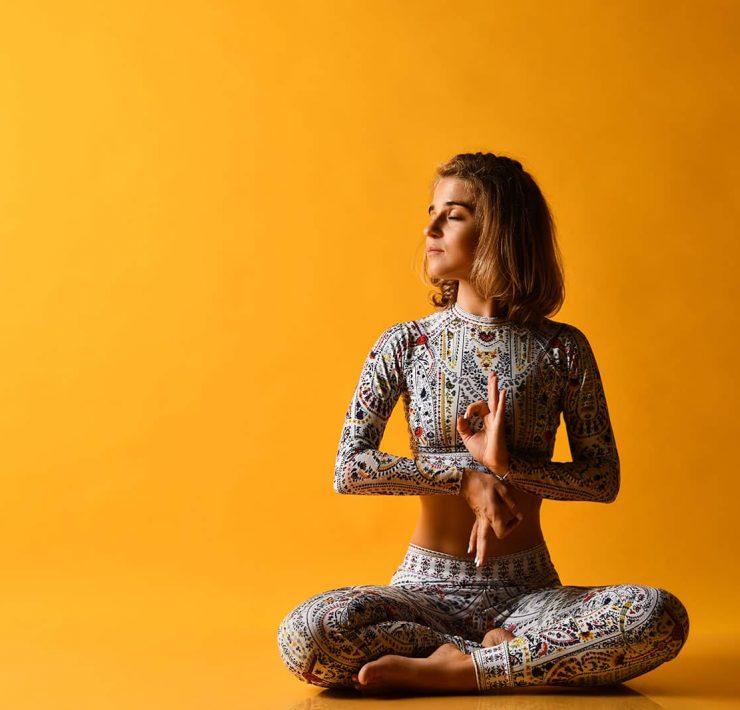
Paving the way for yogic living in Nebraska, Jacqueline Roberts…
The key to life is balance. Balance between work and play, balance between give and take, and balance between activity and rest. It is this balance that makes life such a joy to be part of!
Many people think of their yoga practice as a counterbalance to their more vigorous workouts like running, cycling, or dance. But yoga, itself, requires balance. Vinyasa flows and triumphant salutations need to be balanced with deeper stretches, softer movements, and more internal focus for a whole-body experience.
This is where yin yoga comes into play. Yin yoga has gained popularity over the years and is an excellent way to add depth and balance to your yoga practice. If you are a beginner to yoga in general, yin is also a great way to warm up to the benefits and mental focus that yoga provides. Yin yoga can also be useful for a variety of health and physical goals. The slower pace and attention to detail make it an amazing practice for the budding yogi or the master student.
To fully understand how to incorporate yin yoga into your new or pre-existing yoga routine, it helps to have a good understanding of what yin yoga is, how it’s practiced, and the many benefits it boasts.
What is Yin Yoga?

To get a grasp of yin yoga, it helps to understand the bigger concept of yin and yang. This idea originated in China in the 3rd century BCE (or even earlier), but has been adopted by other cultures and belief systems since ancient times. You have likely seen the famous Tai Ji symbol or encountered the idea of yin and yang through the countless clichés that have sprung up over the millennia. The medical practice of acupuncture, the movement practices of Qigong and Tai Chi, and more martial endeavors like Kungfu all have their roots in the understanding of yin and yang.
Yang is characterized as active. Movement, sun, energy, height, force, and power are all considered yang entities. Yin is the opposite or the complement: rest, moon, receptivity, depth, release. When we practice a very movement-based, high-energy, blood-pumping yoga sequence, that is a yang style practice. Yin yoga takes a different approach.
Yin yoga is slower, uses fewer asanas, and spends more time in each pose. The goal of yin yoga is to release deep fascial constrictions, encourage blood flow to the organs, and balance the mind and body. Rather than a high-octane workout, yin yoga classes are focused on deep stretch and body awareness. Although you might not work up quite the same sweat, yin yoga is not necessarily easy. Many of the asanas will help you to release deep tensions in the muscles and fascia that you weren’t aware of. It is still a dedicated physical practice, but it uses different strategies.
Who Can Practice Yin Yoga?

Yin yoga is for anyone. Because it focuses on truly settling into a pose, focusing the mind, and releasing tensions, this style can be very helpful for a wide range of people. Many yin poses can be adapted for those with limited range of motion or disabilities.
The ability of yin yoga to address deeper and more internal issues also makes it the perfect choice for those who wish to address mental and emotional issues. Yin provides a safe place to work out pain in the emotional body and relieve stress. Yin can direct blood flow to our organs and encourage a healthy internal environment. It helps us to achieve balance inside and out.
What Are The Benefits Of Yin Yoga?

The benefits of yin yoga are wide-reaching. Although yin is best used as a balance to your regular yoga practice, it can be just as useful when used alone or in the treatment of different medical and psychological issues. Here are some of the main benefits yin yoga has to offer.
Relaxation, Stress Relief, and Emotional Health
Yin yoga is excellent at encouraging a restless mind to calm down and relax. Extra time spent in settling poses and the focus on breath helps to quiet the monkey mind coax the brain into a relaxed state. For this reason, yin can be an amazing practice for those who suffer from mood disorders like anxiety and depression, insomnia, and general discontent. Practice yin yoga before bed to help lead the mind into rest, or in the morning to prevent anxiety and worrying throughout the day.
Musculoskeletal Health
Yin yoga pays great attention to the function and structure of the musculoskeletal system. With regular yin practice, expect to increase your flexibility, strengthen your muscles and joints, and release the fascia. Often, we develop pain conditions because we have knots or areas of tension in our deeper muscles and fascia. This puts pressure on the body as a whole. One area of restriction could cause overuse or injury in another area down the line. By spending time in yin postures, we release this underlying strain and mold the body back to health.
Balance and Personal Development
Yoga in general is well-known and loved for its ability to challenge us and bring our heads and hearts into balance. If you are feeling off, overwhelmed, or exhausted from high activity levels, yin might be the perfect way to realign and find balance. Yin yoga also acts as a form of physical meditation; we are closely watching our breath and feeling the changes in our bodies as we practice. Finally, yin yoga allows us to release some of the troubles we’ve stored deep in our bodies. When we repress emotions or traumas, these tensions eventually lodge themselves somewhere in the body. These deep-seated demons can be released by fully engaging in practices like yin yoga, meditation, and breathwork.
How to Start a Yin Yoga Practice

There is no specific way to start your yin practice. With your open heart, yoga mat, and some yin asanas in mind, you can start to transform your practice right away. However, for a more fulfilling experience, you may choose to boost your practice with some helpful props, local yin yoga classes, and a yin-friendly mindset.
Props
Yin yoga often makes use of props to help you find just the right position to settle into. Because poses are often held for several minutes in yin yoga, you’ll want to make sure you’re getting the absolute best position for your body. Consider investing in two yoga blocks, a weighted eye pillow, large weighted pillow, and one or two blankets.
Find Your Class
Whether you choose to practice at home or in studio, there are plenty of yin yoga resources available these days. YouTube offers several yin classes for free. Consider Beginning Yin Yoga or Intro To Yin for your first introduction. Practicing with a community brings a special energy to yin that might be more your style. Many studios around the country are adding yin yoga or restorative yoga classes to their schedules.
Mindset and Intention
Coming to the mat for a yin practice is a little different than for your flow or Hatha classes. With yin, you will want to set your intention to open, release, and rejuvenate. Use this time to take a much-needed rest or to focus your intention on finding peace and harmony with your breath. If you are suffering emotional distress, dedicate your practice to establishing a healthier relationship between mind and body.
A Few Yin Favorites to Get You Started
Now that you know a little more about yin yoga, let’s try out a few popular yin asanas.
Balasana — Supported Child’s Pose

This is an extremely relaxing version of class Child’s pose. For this one, you’ll need a large bolster or pill and several blankets depending on your preferences and comfort.
Pile up your pillows and/or blankets on the mat in front of you. Come to a wide-legged Child’s Pose and gently drop your body over your support pile, turning your head to one side. Rest here for several minutes, then turn your head to the other side and repeat.
Legs Up the Wall

Legs Up the Wall is a commonly used restorative pose that can be used within a session or all on its own. If you’re feeling like you need a rest, a calm-down, or a change in perspective, come to floor and do Legs Up the Wall pose. This pose helps to release tension in the back muscles as well as the abdomen. Blood flows generously into the abdomen and stimulates all your organs.
Find a seat near a sturdy wall. Lie down, face up, and swing your legs up to rest on the wall. You may need to shift your body forward to get closer to the wall. You’ll eventually want your bottom up against the wall as well. Flex your feet and leave your legs straight up or out to the sides in a V. Rest your hands on your belly, at your sides, or one hand on your heart and one on your belly. Breathe full, deep, belly breaths and rest here for several minutes.
Matsyasana — Supported Fish Pose

The supported fish pose is a great way to gently open the chest and back while also releasing the hips while your body sinks into a supported rest. Grab your yoga blocks for this pose.
Begin in a seated position. Place a yoga block a few inches behind you on the lowest height. Try to aim for where your mid-back will rest when you lay down. The second block can be placed a few inches further behind the first. Set this one on the middle or highest height to support your neck. Bring your legs into butterfly pose, placing the feet sole-side together with the knees bent out towards the sides. Gently lower your back onto the first block (adjusting if needed), then drop your neck and head to reach the second block. Rest your arms to your sides. Lay here for 3-7 minutes.
Balance Your Life with Yin
In our busy and crazed society, it makes sense that we all might need a little extra help finding our yin. This key balance in life is crucial for our physical and mental health and it even allows us to step up and be the best humans we can be. As the phrase goes, you can’t pour from an empty cup.
So, whether you are looking for a new way to practice self-care, a balance to your hectic workout regimen, or a remedy for your sleep issues or anxiety, it’s time to give yin a try! Open your heart and mind to a new way of release and restoration.
What's Your Reaction?
Paving the way for yogic living in Nebraska, Jacqueline Roberts is adored by her students as a constant source of support and inspiration. A knack for writing allows her to share what she has learned with the world.














